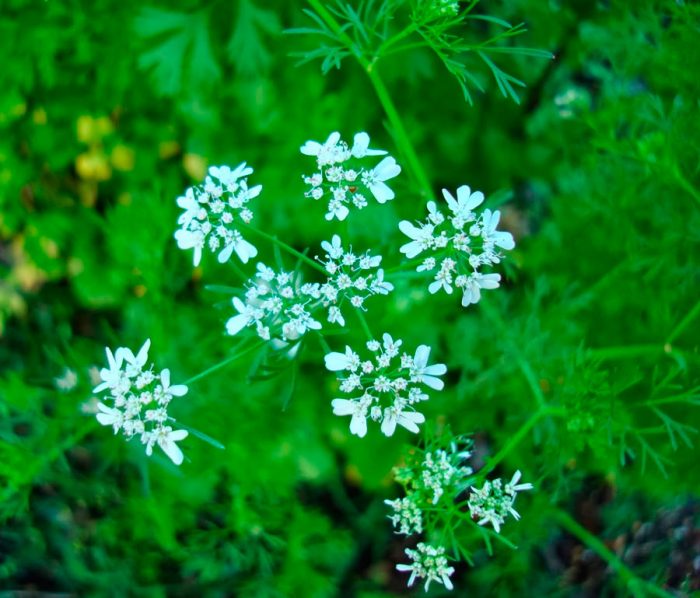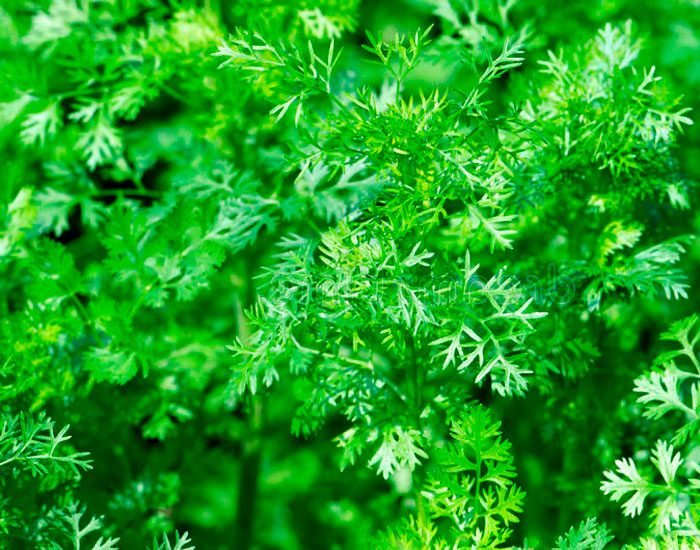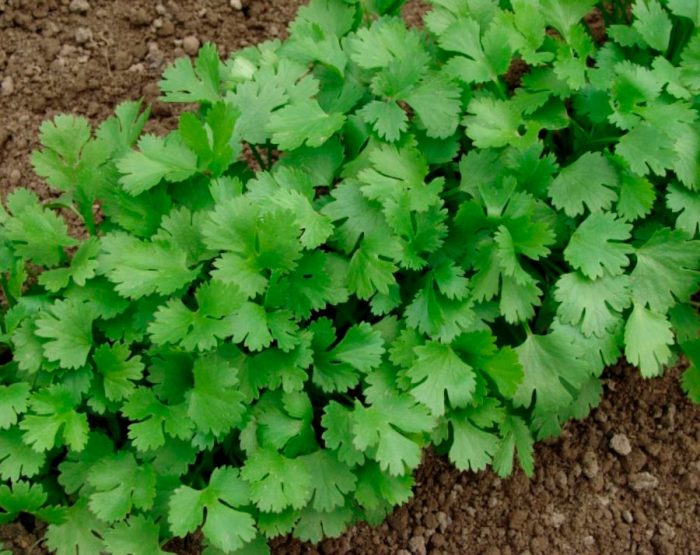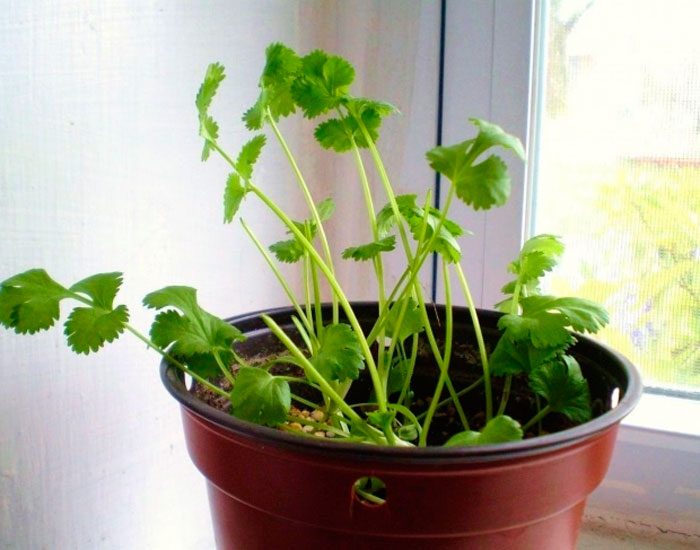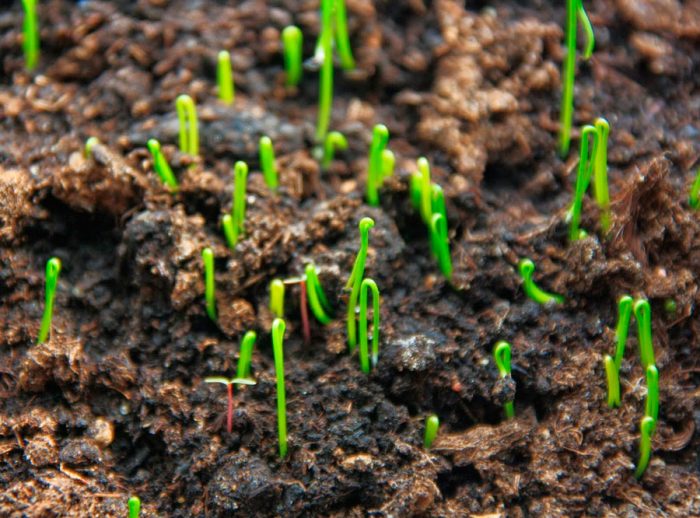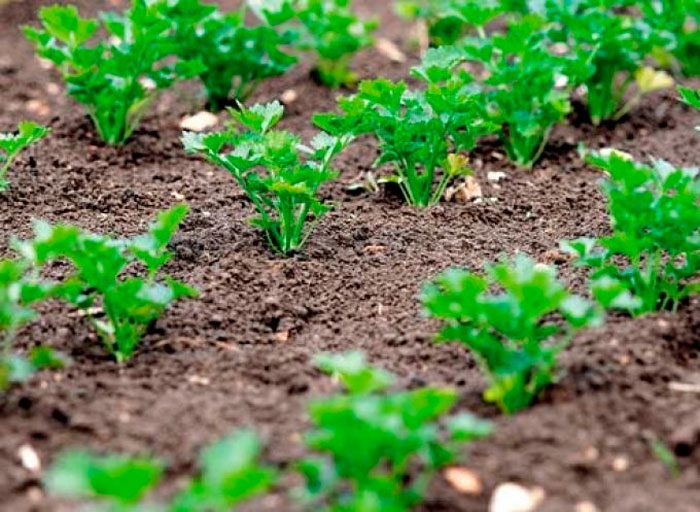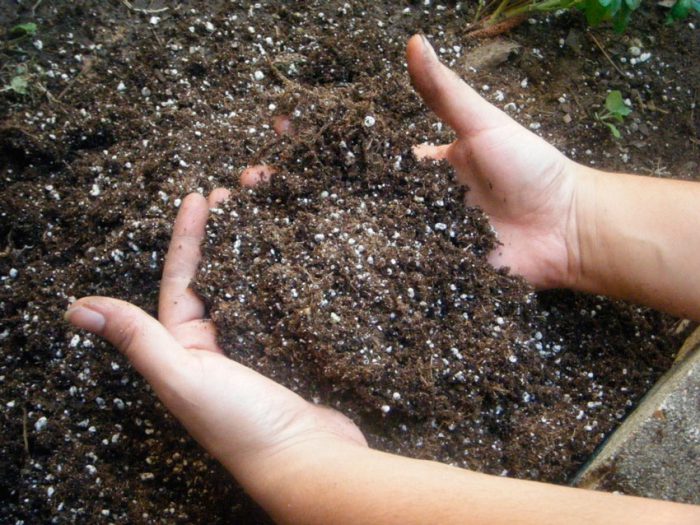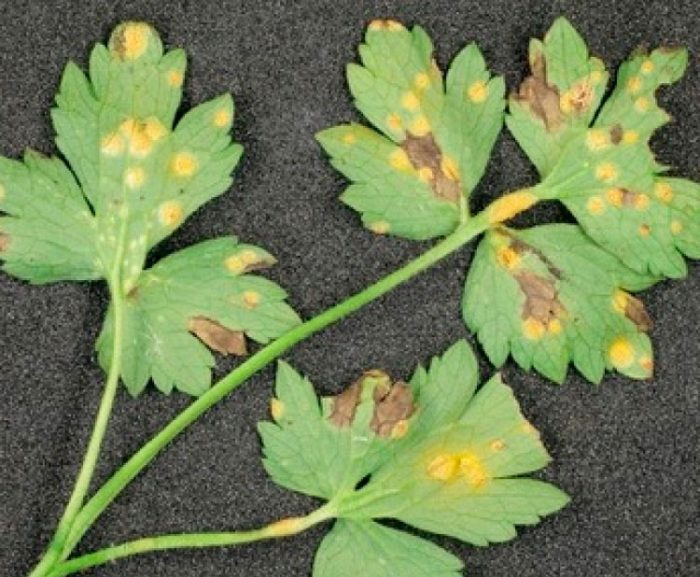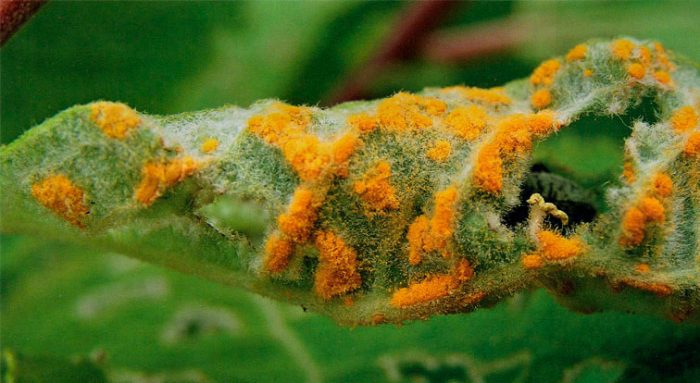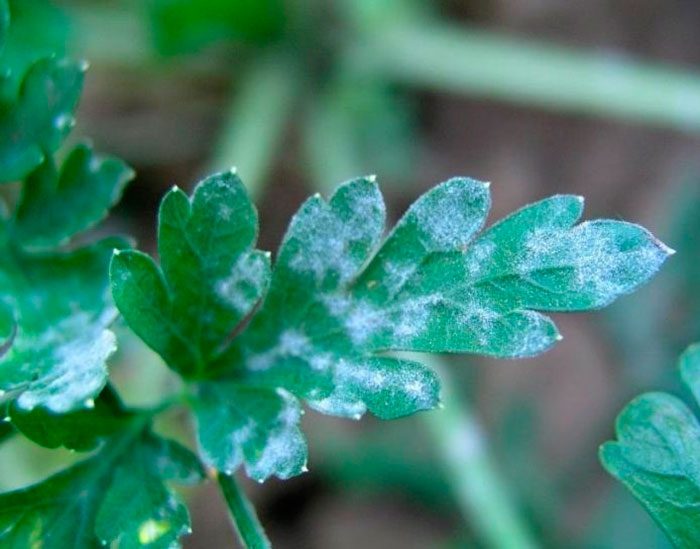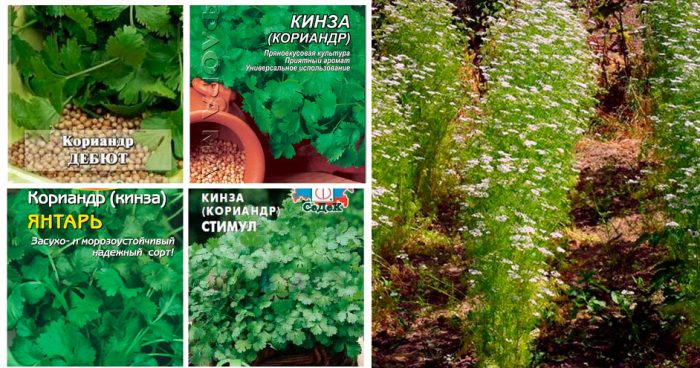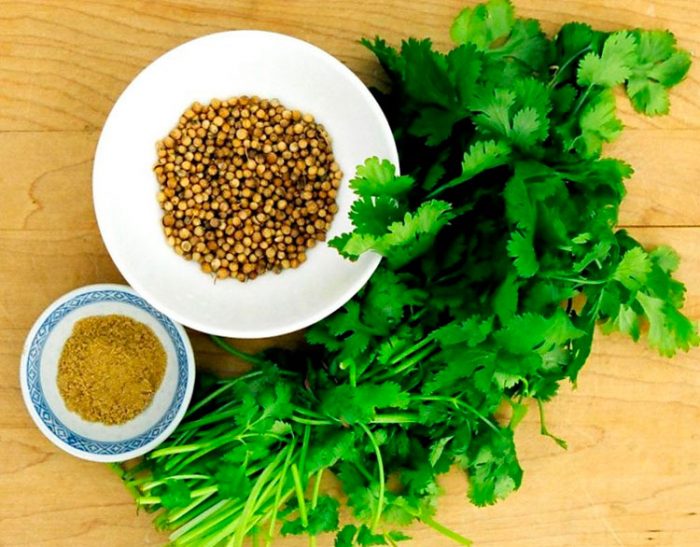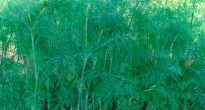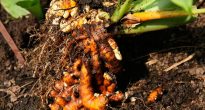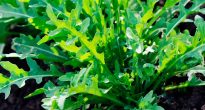The herbaceous annual plant coriander (Coriandrum sativum), also called vegetable coriander, is a member of the genus Coriander of the Umbrella family. It is widely used as a spice in cooking, and also as a flavoring agent in soap making, perfumery and cosmetics. This species is a melliferous plant. The name coriander comes from the ancient Greek word, some scientists believe that the name is derived from the word meaning "bug". An immature plant has a scent similar to that that a bug exudes when crushed. Another part of experts believe that the derivative word has a homonym, which means "St. John's wort". In this regard, it is not known exactly why the coriander was named that way. You should also know that coriander and cilantro are one and the same plant. To date, it is not known exactly where this culture originated, according to one version from the Mediterranean. This plant came to Great Britain, Central and Western Europe from Rome, while later from Europe it was brought to New Zealand, America and Australia. Today cilantro is widely cultivated in the Caucasus, Central Asia, Ukraine and Crimea.
Content
Brief description of cultivation
- Landing... For indoor cultivation, seeds are sown from early to mid-March, and they are sown in open soil in May – March.
- Illumination... Shaded or well-lit area.
- Priming... Sandy loam or loamy soil, which should be slightly alkaline or neutral.
- Watering... Crops should be watered abundantly and systematically. When the seedlings appear, watering must be reduced, while the soil on the site should be slightly damp all the time. After the active growth of the green mass begins in the bushes, they must be watered again abundantly, otherwise they will turn into color. During the ripening of the fruit, water the cilantro again sparsely.
- Fertilizer... If the necessary fertilizers were applied to the soil before sowing, then there is no need to feed the bushes.
- Reproduction... Seeds.
- Harmful insects... Seed eaters, umbrella and striped bugs, winter moths and its caterpillars.
- Diseases... Ramulariasis, rust and powdery mildew.
- Properties... The greens of such a plant are distinguished by anti-scurvy, analgesic, diuretic, anthelmintic and expectorant effect.Cilantro fruit is a popular spice.
Features of coriander
Cilantro is a herbaceous annual plant. The shape of the root is fusiform, the height of the bare erect stem varies from 0.4 to 0.7 m, which branches in the upper part. Basal leaf plates are long-petiolate, large-dissected, tripartite with wide lobes, while their edge is notched-serrate. The lower stem leaves are short-petiolate, twice pinnatipartite, while the upper and middle ones are vaginal pinnately dissected into linear lobules. At the tops of the peduncles there are umbrella inflorescences, which include 3-5 rays, consisting of white or pink small flowers. Fruits are ribbed, solid, ovoid or spherical droplets. Flowering is observed in June – July, the ripening time of fruits depends on the climate and is observed in July – September. The seed remains viable for 2 years. Fragrant greens are called cilantro and are used dried and fresh, while the seeds are used as a spice called coriander.
Growing coriander on a windowsill
If desired, coriander can be grown on your windowsill, in which case fresh herbs will be on your table all the time. Such greens contain a large amount of vitamins and other substances that are very useful and necessary for the human body. Seedlings are sown for seedlings from early to mid-March. The seeds must be evenly distributed over the surface of the moistened soil mixture, keeping a distance of about 70 mm between them, while they are buried into the substrate by about 10-15 mm. Crops should be covered from above with transparent polyethylene or glass, and then the container is placed in a warm and well-lit place. In the case when the daylight hours are still too short, a phytolamp or fluorescent lamp should be installed above the crops at a height of 20 to 25 centimeters.
Taking care of your seedlings is very simple. Watering should be carried out only when it is necessary, it is ventilated systematically, while condensate must be removed from the shelter. After the seedlings have formed cotyledonous leaf plates, the glass must be removed. The first greens can be cut after 20 days.
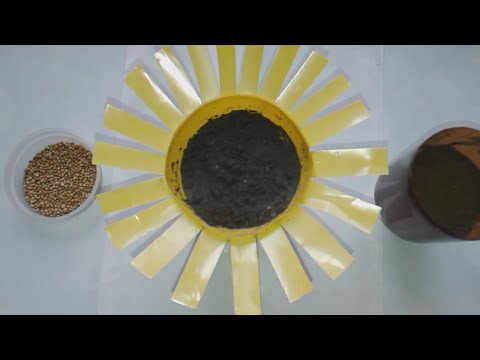

Watch this video on YouTube
Planting coriander outdoors
To grow coriander in open soil, it is necessary to choose an area where cucumbers, squash and squash, as well as related crops, previously grew. The site must be sunny and well protected from drafts. This culture can also be grown in a shaded place, but the shade is not suitable for this, since there cilantro grows weak, with a small amount of foliage, while flower arrows form early enough in it, while the fruits grow small and ripen for a long time. Low-lying areas are not suitable for sowing cilantro, otherwise the bushes will get wet before they have time to ripen. Such a culture grows very well on slightly alkaline or neutral soil, which should be loamy or sandy loam.
The site must be prepared before sowing cilantro, for this they dig up the soil with the introduction of humus into it (for 1 square meter of the site ½ bucket), which should be combined with a not very large amount of wood ash. Instead, a complex mineral fertilizer can be applied to the soil (per 1 square meter from 20 to 30 grams). Sowing is carried out in March – May. Sprouts begin to appear already at a soil temperature of 4 to 6 degrees, but the warmer the ground, the faster the seedlings will appear.
On the site, it is necessary to make not very deep grooves, while in them it is necessary to decompose dry seeds in 2 or 3 pieces, between which a distance of 80 to 100 mm is observed.The distance between the grooves should be from 10 to 15 centimeters, in this case the growing bushes will not block each other from the rays of the sun. The seeds are buried 15–20 mm into the ground. Then the crops must be watered. The seedling time depends on the variety of coriander, storage conditions and weather, and varies from 7 to 20 days.
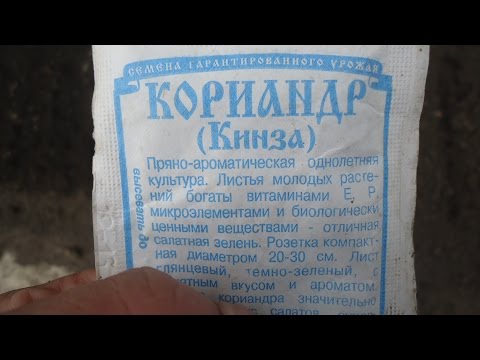

Watch this video on YouTube
Coriander care
After the seedlings grow up, they will need thinning, in this case, each plant will have sufficient area for normal growth and development. Of those seedlings that have grown in one nest, the strongest should be left, and the rest must be pulled out. Further, the coriander must be watered in a timely manner, weeded, and also loosened the soil surface around the bushes.
How to water
Crops need to be watered frequently and abundantly, because germinating seeds should not feel a lack of liquid. After the seedlings appear, watering should be reduced, while the soil in the garden should be slightly damp all the time. After the active growth of the green mass begins, the abundance of watering is increased, if this is not done, then the bushes will turn into color too early. After the fruits begin to ripen, watering should become very poor. When the bed is watered or it rains, its surface must be loosened, otherwise there will be little greenery, and the inflorescences will grow early enough.
Top dressing cilantro
Fertilizers are recommended to be applied to the soil before sowing seeds. And during the growing season, feeding of the bushes is not carried out. The plot for sowing must be prepared in the autumn, for this, potassium-phosphorus fertilizers and compost are introduced into the soil during digging, while in the spring, just before sowing the seeds, nitrogen-containing fertilizers are applied.
The collection of greens is carried out as it grows. After the flower stalks are formed, the greenery will become much less, while the foliage will coarsen, and its nutritional value will decrease. If you take care of the crop correctly and adhere to the rules of cilantro agrotechnology, then 3 green crops can be removed from one bush per season.
In the area where this crop was grown, next year you can plant eggplants, as well as other representatives of the Solanaceae family.


Watch this video on YouTube
Diseases and pests of coriander
Diseases
If you take care of the coriander incorrectly or do not follow the agrotechnical rules of the culture, the bushes can be affected by rust, ramularia or powdery mildew.
Ramulariasis
Ramulariasis is a fungal disease that develops actively in high humidity, if it is very cold in the summer and abundant dew falls in the morning. This disease can destroy coriander bushes. On the surface of the leaf plates, specks of brown color are formed; over time, a pale gray bloom appears on them. Outwardly, the bush looks like a burnt one, and dies rather quickly. In order to prevent the seed, before sowing, it is necessary to pickle with a solution of Fitosporin-M, while in the area where cilantro grew last year, it cannot be sown this season.
Rust
Another fungal disease is rust, it is very common and can greatly harm this crop. In the affected bushes, pustules of an auburn color form on the surface of the leaf plates, they tear over time, and spores of the fungus, carried by insects or the wind, spill out of them. To prevent the bushes from getting sick with rust, it is necessary to take the same preventive measures as in the fight against ramulariasis.
Powdery mildew
Powdery mildew is also a fungal disease. A whitish bloom forms on the aerial part of the affected plant. Over time, this plaque becomes denser and changes its color to brown.The disease develops most actively in dry and sultry weather with sharp changes in temperature and humidity. A large amount of nitrogen in the soil can also contribute to the development of the disease. All diseased bushes must be removed from the soil as soon as possible and destroyed. To get rid of such a disease, if you wish, you can resort to folk remedies that are distinguished by their non-toxicity: the foliage should be treated with a solution of soda ash or fresh mullein, yogurt or infusion of fermented weeds.
Harmful insects
On cilantro, striped and umbrella bugs, seed eaters, and also caterpillars of the winter scoop can settle.
Since experts do not recommend spraying the bushes with insecticides, in order to prevent the appearance of the seed eater on the bushes, the seed must be etched before sowing. In the autumn, it is imperative to clear the site of all plant residues, and the soil will need deep digging at this time.
If bugs or scoop caterpillars appear on the bushes, they will need to be collected by hand. If a lot of cilantro is grown, then the bushes can be treated with a solution of wood ash or mustard, and an infusion of onion husks can also be used.
Cilantro varieties
Below will be described those varieties of coriander that are most popular with gardeners.
- Caribe... This hybrid Dutch variety has appeared relatively recently. The bushes have a lot of foliage, which has a strong and pleasant scent. This annual plant is frost hardy. Its leaves are very tender, and they are used as a seasoning for the first and second courses, as well as for salads, and the seeds are used in the preparation of confectionery and marinade.
- Amber... The variety is distinguished by slow shooting. The bushes have a large number of very fragrant leaves. The composition of such a plant includes many essential oils, its greens are added to the first and second courses, and also to salads, while the seeds are used in the preparation of sausages, confectionery and marinades.
- Borodinsky... This medium-ripening variety can be eaten fresh, and seasonings are also prepared from it. This coriander has a very pleasant taste and a delicate smell.
- Debut... This medium-ripening variety is resistant to stem stalk. It is used in the preparation of marinades and various dishes.
- Stimulus... Medium late variety. The bush has a compact rosette, consisting of dark green shiny leaf plates, in diameter it reaches 25-30 centimeters. This cilantro can be added to meat dishes, salads and soups.
- Venus... This late-ripening variety has a raised leaf rosette. Greens have a pleasant taste and exquisite smell, they are added to salads and used to decorate various dishes, seeds are used to flavor bread and confectionery, as well as in the preparation of marinades.
- Taiga... A late-ripening spicy variety, which has a large amount of foliage, colored in a rich color, they have an unusual smell. The seeds are used as a condiment and herbs are added to a variety of dishes.
- Vanguard... This medium-ripening variety is undersized. The rosette is raised and has a strong odor. The seeds are added to marinades, and dried and fresh foliage is added to a variety of dishes.
Still popular are such varieties of cilantro as: Alekseevsky, King of the Market, Early, Kirovogradsky and Oktyabrsky.
Coriander properties: benefits and harms
Useful properties of cilantro
The shoots and foliage of coriander contains rutin, carotene, vitamins, trace elements and essential oils, and the fruits contain steroid compounds, tannins, sucrose, fructose, glucose, polyphenols, fatty oils, pectin, alkaloids, starch and essential oil.Such a plant becomes even more useful due to the fact that it contains a mixture of organic acids: linoleic, oleic, isooleic, ascorbic, myristic, stearic and palmitic.
Coriander has an anti-scurvy, analgesic, diuretic, anthelmintic and expectorant effect. It helps to increase appetite, lower blood pressure, disinfect the gastrointestinal tract, improve intestinal motility and vision, increase potency, stimulate kidney function, and cilantro helps with insomnia, eliminates swelling and relieves nervous tension, energizes and tones.
The juice of such a culture helps to reduce bleeding gums and strengthen them, eliminate toothache and disinfect the mouth with stomatitis. Greens help cleanse the human body of harmful cholesterol, and also has a beneficial effect on the activity of the cardiovascular system. Eating a few coriander leaves can help reduce the effects of alcohol and cure hangover.
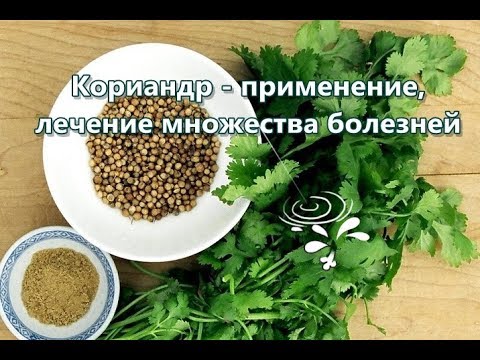

Watch this video on YouTube
Contraindications
Coriander should not be eaten with diabetes mellitus, coronary heart disease, thrombosis and thrombophlebitis, after a heart attack and stroke, as well as pregnant and lactating women. If you eat too much green coriander, then it can harm even a completely healthy person: there is a violation of the menstrual cycle and sleep, as well as a weakening of memory. In some cases, when overeating greens, allergies may appear: pain in the abdomen, vomiting, itchy rash on the surface of the skin, nausea and upset stools. As soon as the first symptoms of allergy are noticed, it is necessary to immediately take an antihistamine, otherwise complications such as Quincke's edema and anaphylactic shock may appear soon enough.

